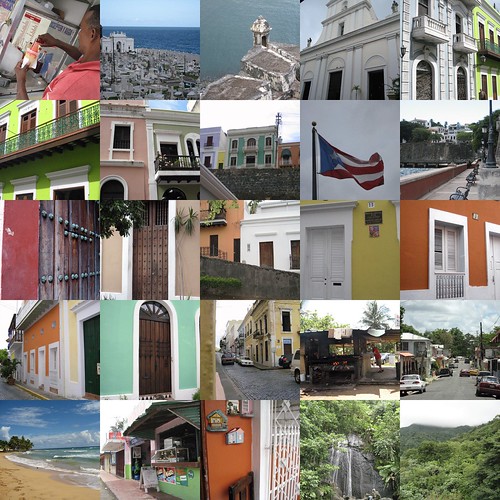
Ah September.
This September is particularly important to me because it marks A) the fact that my husband and I have survived one year of marriage without killing each other and B) the fact that in a year, we haven't taken any sort of vacation. Those two facts combined was enough reason for us to pack our bags and head eastward to my husband's native Puerto Rico.
They call the island "La Isla Del Encanto" (The Island Of Enchantment) and after a visit of only a week, I can see why. Because after that one week, there are many things I miss about it already. I miss that all its buildings, no matter if in wealthy community or in a not-so-wealthy one, are painted in colors that make you think of ice cream and salt water taffy. I miss the singing of the coquí, a type of tree frog native to the island, at night. I miss the warmth and hospitality of my in-laws and everyone else that I met. And the food...
Yes, I miss the food dearly.
Until last week, my understanding of Puerto Rican food has been based on four meals: two good but very limited meals from a Puerto Rican cafe in Maui of all places and from my husband's grandmother, and two bad ones from a couple of half-assed but rare-to-come-by Puerto Rican-slash-Mexican-or-pan-Caribbean joints here in the Southland. Until last week, my knowledge of Puerto Rican food was limited pretty much to pasteles, a dish similar to tamales but made with plantains instead of corn masa and wrapped in a banana leaf instead of a corn husk, and arroz con gandules (rice with pigeon peas). But after my trip, my experience with Puerto Rican flavors expanded in a big way, and I was lucky enough to taste it both the home-cooked- and restaurant-cooked way.
So what is Puerto Rican food like? Well first let me show you where and what I ate...
Mami's (a.k.a. my Mother-In-Law's) meal of carne mechada, arroz y habichuelas, amarillos, and guineos en escabeche could not have been any more comforting after a long trip out from the mainland. Beef braised with potatoes, green olives, onion and tomato paired with Puerto Rico's "daily bread"--medium-grain rice with a nice hint of oil, stewed pink beans, and sweet plantains--warmed and soothed the soul despite heat and humidity that made one feel like they were breathing hot mud.

A dish that I'd never heard of was guineos en escabeche, a dish of green bananas marinated in oil, vinegar, onion and garlic. Both filling and slightly refreshing from the unripe banana flavor, this is a dish that has a definite acquired taste.
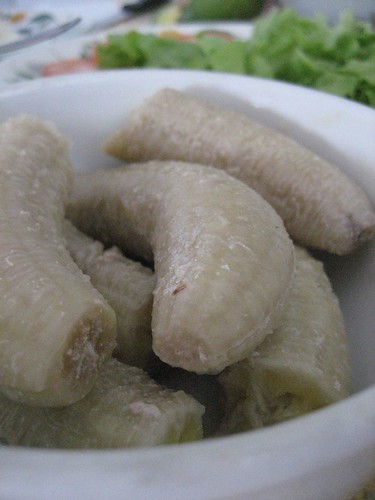
Mami's arroz con salchichas, or rice with vienna sausages, was downright ghetto, and I loved it. How many times have I thrown Spam and corn together to make fried rice? How many times did my Grandma slice hot dogs up and throw them into her fried rice? How do you think kimchi bokum-bap was created? The same way arroz con salchichas was invented, I'm sure. I gobbled this up, along with a delicious pastel filled with tender pork and a pastelillo, an empanada-like pastry filled with a tasty ground beef and cheese mixture.
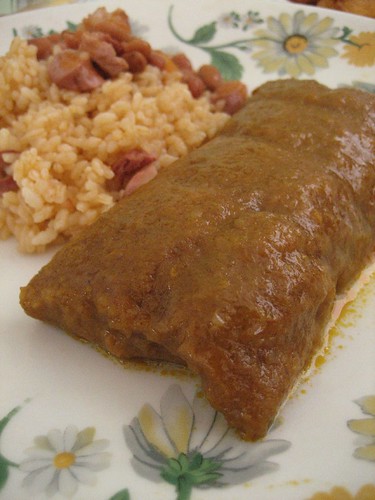 pastel y arroz con salchichas
pastel y arroz con salchichas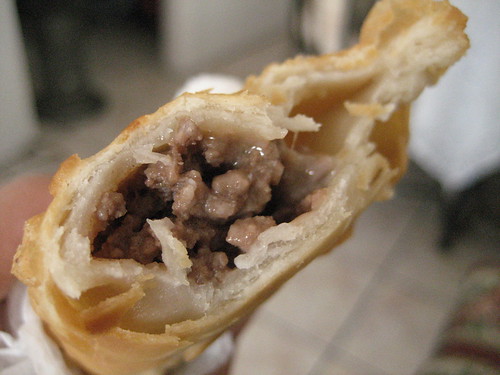
My husband and I stayed in Isla Verde, a beachy area near the airport that's densely packed with hotels and tourists. I think it's where alot of Caribbean cruise goers make their layover, hence the abundance of tourist trappy chain restaurants such as Ruth's Chris Steak House and Momoyama in the area. For us, however, it was pretty much all about roadside food, and in Puerto Rico, there is definitely no lack of it. We ate at Bebo's BBQ one night, drive-in like joint located in Carolina right alongside the highway. We were the only tourists amongst a long line of locals--a good sign if you ask me. For a little over thirteen bucks, we got ourselves three huge plates of food: a half pound of lechon asado (roast pork) roasted so that the meat stayed juicy-tender and the skin had a perfect crackly crunch, one half a pollo asado (roast chicken) also perfectly roasted, some amarillos (sauteed plantains) and a plate of morcilla (Sausage stuffed with blood and rice).

I wanted to like the morcilla--I really did--but it was the intense culantro flavor in the thing that sent me away. Culantro is an herb used frequently in Puerto Rican cooking--an herb that's like cilantro's evil-er twin brother--and those that know me well know that I'll eat pretty much anything--stomach, intestines, blood, liver, kidneys--but nothing makes me gag faster than that vile soapy weed. No offense, cilantro and culantro lovers.
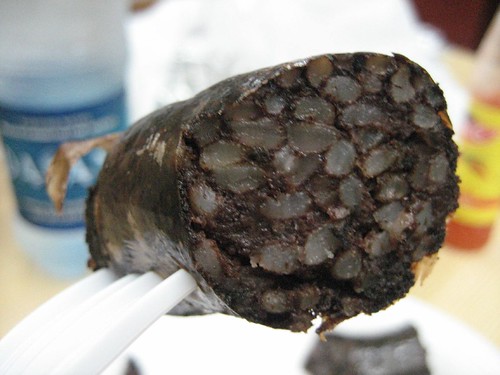
One of the favorite parts of this trip was the drive along the northeastern coast of the island. As we left Isla Verde and headed east into the towns of Piñones and Loíza, there was literally food kiosk after food kiosk on the sides of the road. This had to be unreal, right? Was I dreaming that I could literally stop and get some good, down-home food and snacks, drive off, stop at the beach and play, get back in the car, drive down the road some more, stop at another food kiosk and repeat the process over and over again? If I had been dreaming, I'd never want to wake up. But it was all real. It was not a dream.
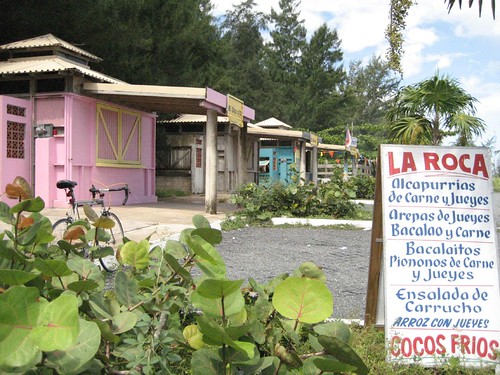
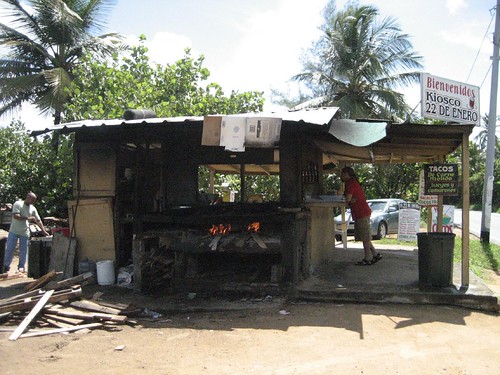
I think it was a good thing that it was still relatively early and that many of these kioskos were not open for business yet, else I would have had to stop at all of them. And then I would have gained 40 pounds solely from all the fried snacks I would have eaten. No, fortunately for me, we stopped at only a few and I perhaps gained only 10 pounds from all the delicious snacks I ate. At any one of these kioskos, you can get mofongo (a dish made of mashed fried green plantains), arroz con jueyes (rice with crab), a variety of seafood cocktails, and best of all, a variety of deep fried snacks. My favorite one was the pionono, made of sweet plantain stuffed with seasoned ground beef and deep fried--so fucking good with its crispy, caramelized exterior that gave way to a juicy interior of both sweet and salty flavors.
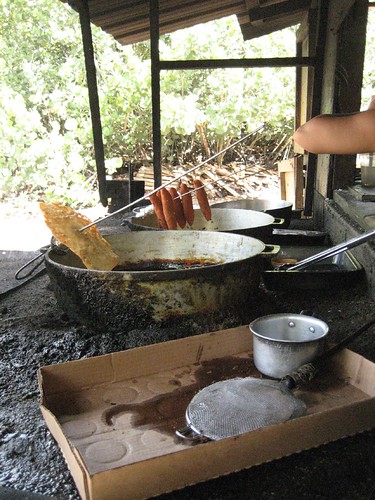
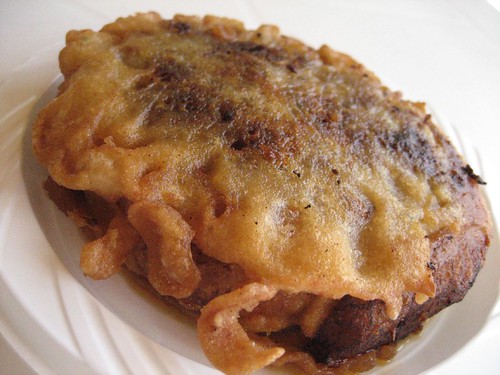
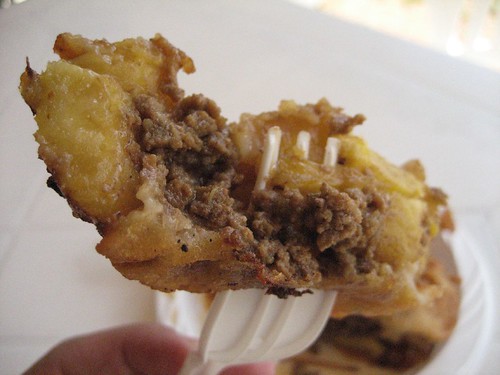
I also loved the popular alcapurria, a fried tube-shaped snack made of a mixture of plantains and yautia and stuffed with meat, in this case, ground beef.
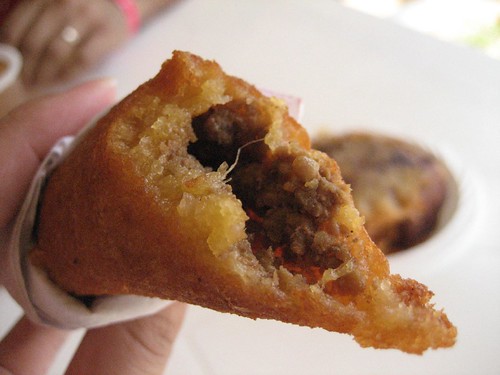
I wish that the place that made my bacalaito, a salt cod fritter and another local favorite, had made it better. The one we had tasted of stale oil and we were just too stuffed to try one from another place.
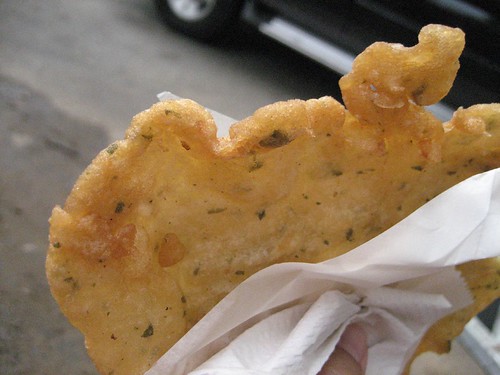
For about a buck more at most of these kioskos, you can add a cup of ice cold mavi, a drink made of the bark of the Colubrina tree and sugar. Definitely an acquired taste, mavi has a sweetish-tartish taste to it and is probably what drinking liquid haw flakes would be like. Sorry, but I think I like my haw flakes better in solid form.

And as if the kioskos in Piñones and Loíza were not enough, there are even more a little further eastward in the coastal town of Luquillo. Here, there is about a three block stretch of end-on-end kioskos selling the same types of foods.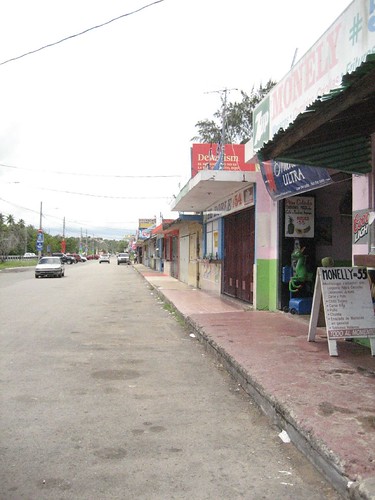
It was here that I tried mofongo for the first time and fell in love. It's a dish made with fried green plantains mashed with garlic, oil and chicharrones, served either with a side of meat or relleno (filled) with some type of meat. I chose to have mine con carne frita, with fried pork chunks. The pork was fried until the meat was a wee bit crispy and until its luscious layer of fat had a nice snap to it. Paired with the garlicky salitiness of the mofongo, I was in heaven.
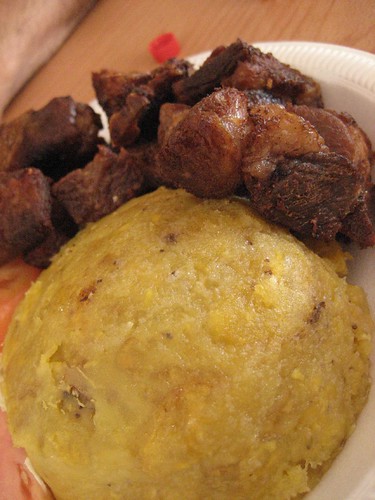

Afterwards, I had some cold coconut water (coco frio) served in a whole coconut to wash it down. Good, but the place we got it from needed to serve it colder.

While in Luquillo, we also tried a place called King Seafood that Mami recommended, a place not within the slew of kioskos, but tucked away on another street. It was here that I really discovered how fresh Puerto Rican seafood can be. Though the name in Spanish escapes me, we had these fried mahi-mahi nuggets that were so damn fresh that I almost mistook them for chicken.
Asopao, a soup made with some sort of meat (in this case shrimp) and rice, was enjoyed by all except yours truly because of its heavy culantro flavor.
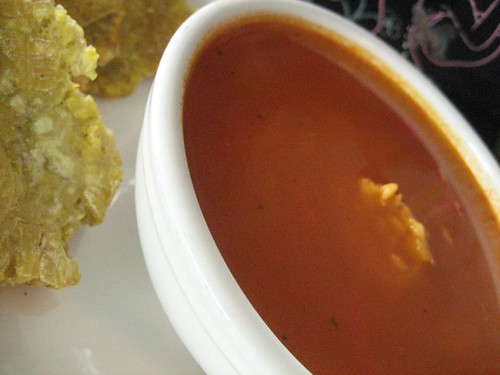
Ensalada de pulpo, a cocktail-like salad of octopus, peppers and onions, was refreshing after having eaten so much fried food and red meat and further showcased the island's fresh seafood.

On the side, some tostones, fried patties of green plantain, and sorullitos de maíz, fried corn fritters reminiscent of hushpuppies, were welcome additions to our meal.
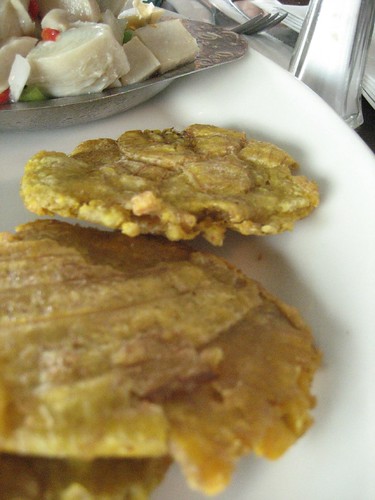
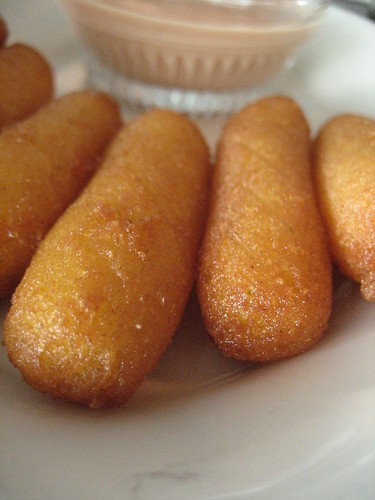
So what is Puerto Rican food like, you ask? From what I know now, it's a cuisine that combines Indian, Spanish, and African influences into a flavor all its own. Fried, stewed and roasted meats are popular and are often served with rice and beans or some sort of tropical starchy fruit/root/tuber such as the plantain or yucca. Foods are generously seasoned, say, with sofrito, adobo, achiote or sazón, but are not spicy in a scotch bonnet pepper sort of way. I could go on and on with my descriptions and observations about Puerto Rican cuisine, but the most important thing I took away was that wherever I ate, whether it was at Mami's house or at some guy's pincho stand on the side of the road, there was alot of heart put into this food...the kind of passion that comes only when one reaches to the depths of one's soul to cook like it's the last time they'll ever cook. That, my friends, is Puerto Rican cuisine.



